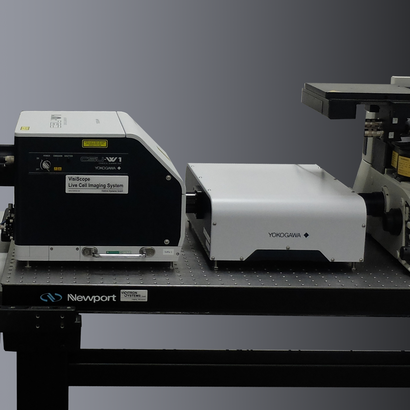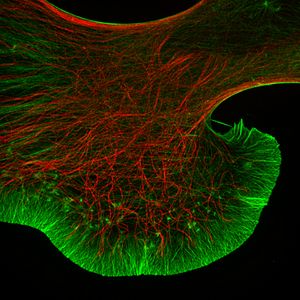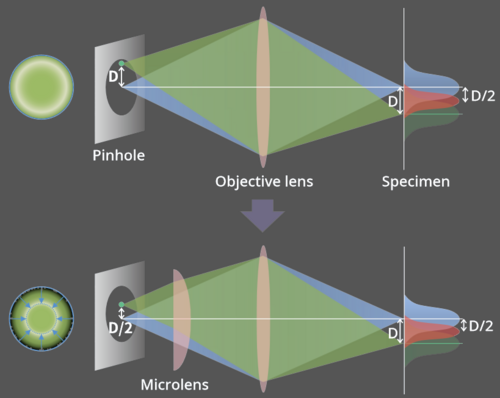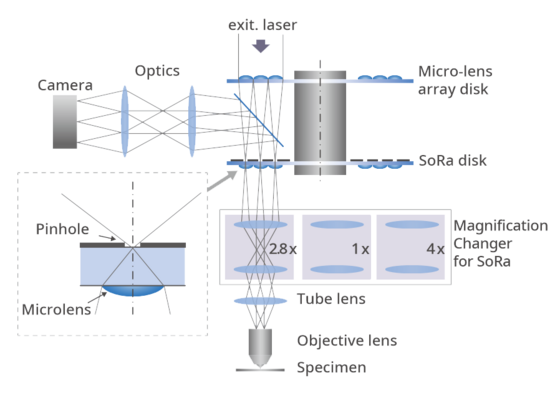CSU-W1 SoRa Confocal Scanner Unit
Super Resolution via Optical Re-assignment
-
XY resolution exceeding diffraction limit
-
Ideal for super-resolution live cell imaging
-
Ease of use of CSU is kept
-
Upgradable from CSU-W1

The newest addition to the Yokogawa CSU spinning disk family enables Super-resolution
The new CSU-W1 SoRa is the best tool for super resolution imaging. Just like the CSU, high-speed real time imaging can be performed with super-resolution. By modifying the Nipkow disk with a (patented) micro lens pinhole array the resulting MLPHA-disk – or Super-resolution disk – enables optical photon reassignment. Resolution improvement (latera: 150 nm; axial: 450 nm) is achieved without additional computation and with the same speed, life cell quality and easy-to-use handling as one might expect from a spinning disk system.
Effective "Field of View" depending on the SoRa magnification changer
- magnification: selectable 1.0x, 2.8x and 4.0x
- 4.0x for 60x objective
- 2,8x for 100x objective
- XY/Z resolution (optical super resolution) 150nm / 320nm
- XY/Z resolution (after deconvolution) 120nm / 300nm
XY resolution of approx. 120nm
XY resolution has been improved by approximately 1.4x the optical limit based on spinning-disk confocal technology. Furthermore, a final resolution approximately twice the optical limit is realized through deconvolution.

Comparison of widefield, SoRa spinning disk raw and SoRa spinning disk + deconvolution

Principle of super resolution


The image formation in regular confocal microscopes is shown as the product of the illumination PSF (point spread function) and detection PSF. If we consider the image formation on the pinhole at a position D from the optical axis, it is the product of the illumination PSF and detection PSF (as shown), and we can see that information at the position D/2 from the optical axis at the light source is transmitted. That is to say, information at the D/2 position at the light source is magnified to D on the pinhole. In order to correct this, a microlens is fitted and the individual focal points projected onto the pinhole are optically reduced by half, creating an ideal image formation. By doing so, the resolution is made approximately equal to an ideal confocal microscope, in which the pinhole has been reduced to an infinitesimal size, producing an estimated 1.4x improvement upon regular confocal microscopes.
Reference
T. Azuma and T. Kei, “Super-resolution spinning-disk confocal microscopy using optical photon reassignment", Opt. Express 23, 15003-15011 (2015)
